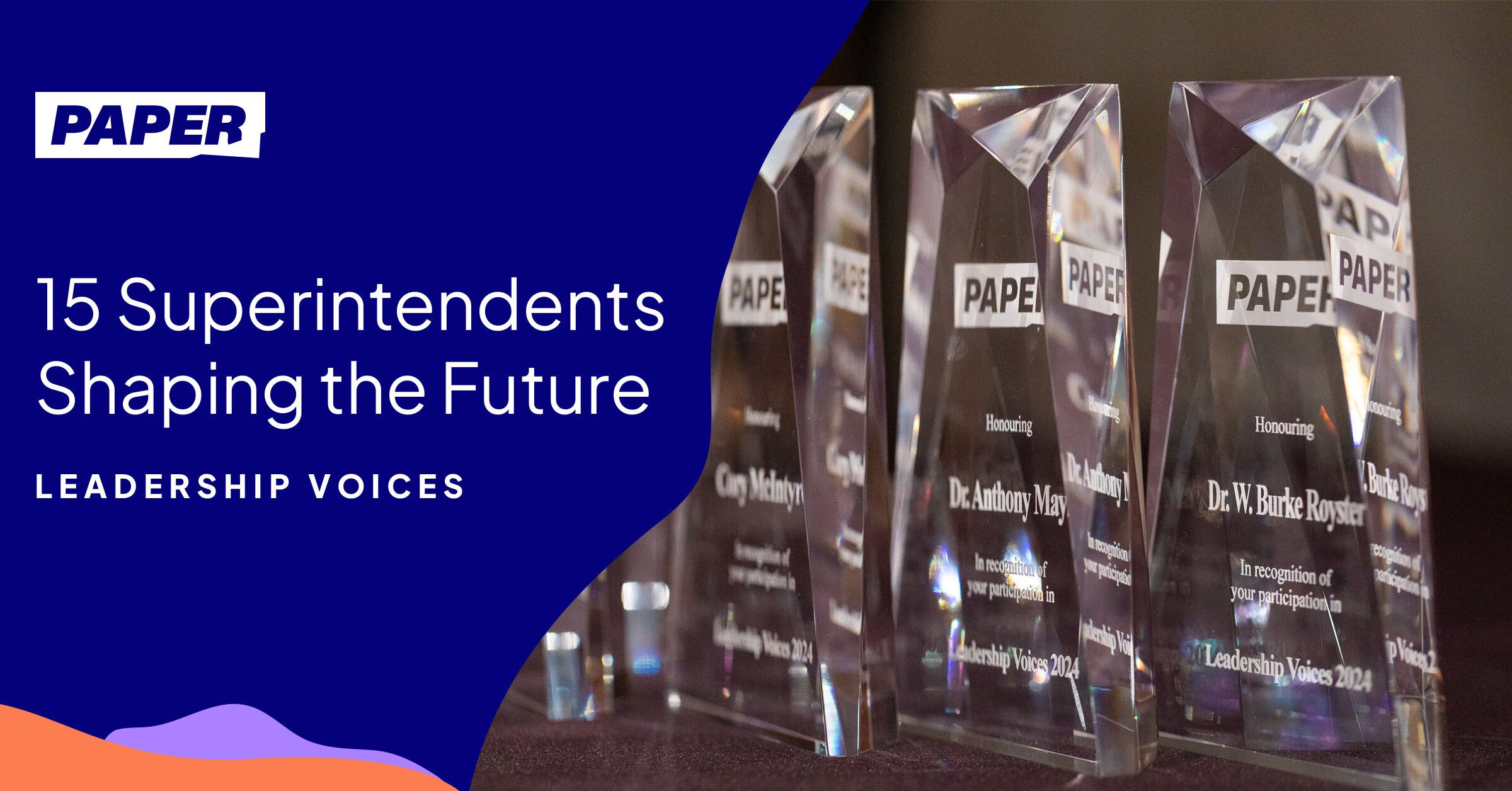
Insights from 15 leading superintendents on the now & future of K-12
Imagine this: The kindergarteners of today will be the high school graduates of 2036. Michael McCormick, who is retiring after 15 impactful years with the Val Verde Unified School District in California, poses a thought-provoking question:
"How do we prepare students to not just survive but thrive in their futures?"
In search of answers, we spoke with 15 visionary K-12 superintendents who are at the forefront of educational innovation. Their insights shed light on the critical challenges and opportunities that define our path forward:
The future is artificial intelligence. Are schools ready?
The consensus among leaders is clear: Understanding and leveraging artificial intelligence (AI) in education is non-negotiable. It's not just about teaching the technology but integrating it in a way that enhances teaching and learning while preparing students for a future where AI is a constant companion.
As Erin Kane, superintendent of Douglas County School District in Colorado, states,
"AI will not replace humans. But humans who can leverage AI will replace humans who cannot."
Leaders also highlighted the need for the use of AI to be responsible and ethical. “We have guidelines that we've put in place,” said Dr. Theresa Williams, Superintendent of Plano ISD in Texas. “We have provided training to our teachers, and we've had teams come in and identify how these tools can elevate and enhance what's happening in our classrooms.
ESSER propelled innovation and improvements. How are leaders navigating looming fiscal cliffs?
We heard about some amazing initiatives thanks to the influx of pandemic relief funds. Dr. Sean Bulson of Harford County Public Schools in Maryland shares how these enabled the hiring of full-time substitute teachers, a game-changer for school flexibility and support.
“It’s turned into this amazing resource and it was something we never would have considered doing before,” shares Dr. Bulson. “We’re trying to figure out how to keep that service in place, and we've had to trim it down a little bit.”
Most school districts are currently evaluating what tools are the most effective and prioritizing their spending accordingly. Dr. Carmen Balgobin, Superintendent of Volusia County Schools in Florida, shared that her district is also getting creative by exploring cost-sharing with other districts to purchase licenses in bulk for a discount.
Literacy scores are low nationwide. How are school districts investing in literacy?
Literacy remains a key challenge and priority for most districts. Cory McIntyre shared that his team at Anoka-Hennepin Public School District in Minnesota has been focusing on improving literacy as their top priority this past year:
“If we start with literacy, everything else will fall into place—whether it's our equity work or our math efforts.”
Discussing the Read Act, Minnesota’s new legislation, that emphasizes the science of reading, superintendent McIntryre pointed out that 1800 staff members need to get trained in their letters program, which is a big undertaking. But the results they are seeing make it worth it—happier kids who are no longer struggling to read.
Dr. Anthony Mays’ team at Alief Independent School District in Texas is working to build a culture of literacy through programs like their Million Minute Challenge, where each campus is challenged to read one million minutes.
Kirk Shrum’s team at Visalia USD in California introduced a phonics program this past year to address a significant gap in literacy. All students from kindergarten to second grade receive a 30-minute daily lesson on phonics. "We're already seeing that impact our reading scores. We're seeing our students apply those strategies, not just in reading but across all subject areas."
Reflecting on these discussions, it’s clear that collaboration, innovation, and a steadfast commitment to students will empower us in education to navigate today's challenges while actively shaping tomorrow's landscape. My team at Paper is passionate about supporting educators who are driving the future of education.
I invite you to watch the enlightening interviews with all 15 superintendents for deeper insights on the innovative approaches, challenges, and the impactful work being done across the nation to advance K-12 education. Explore the series at paper.co/leadership-voices.
